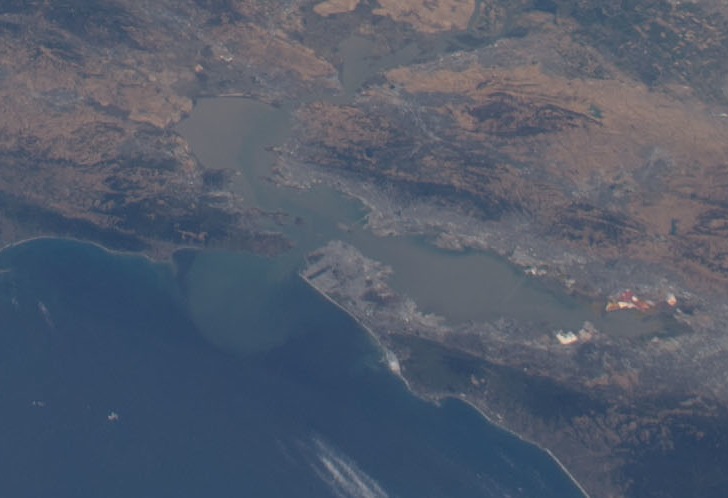 2025
2025 2024
2024 2023
2023 2022
2022 2021
2021 2020
2020 2019
2019 2018
2018 2017
2017 2016
2016 2015
2015 2014
2014 2013
2013 2012
2012 Range Finder
Range Finder Jacob's Ladder
Jacob's Ladder Space Simulation
Space Simulation Volcano Diorama
Volcano Diorama Surname Extinction
Surname Extinction Dvorak
Dvorak Tonsillitis
Tonsillitis Self-driving Engineer
Self-driving Engineer SVG Open 2012
SVG Open 2012 DOM Tutorial
DOM Tutorial OV-105
OV-105 Workshops
Workshops 15 Years
15 Years Underwater Claw
Underwater Claw Moore's Bet 2
Moore's Bet 2 Python in Python
Python in Python CS Larva
CS Larva Blockly
Blockly Transit of Venus
Transit of Venus Maker Faire 2012
Maker Faire 2012 Rolling Along
Rolling Along Literal Quotes
Literal Quotes Glencoe
Glencoe Graphical Languages
Graphical Languages 2011
2011 2010
2010 2009
2009 2008
2008 2007
2007 2006
2006 2005
2005 2004
2004 2003
2003 2002
2002
Underwater Claw
23 July 2012
While kayaking I've seen all manner of things fall into the bay. From hair clips to cell phones to bicycles. The bottom of San Francisco Bay is littered with random objects. Accordingly, I attempted to build a robot claw to see what was down there and retrieve some artifacts.
Soundings from Pier 40 (made by attaching a rope to the transformer from an old microwave oven and repeatedly dropping it into the depths) revealed that the bottom was about five meters down. A pair of 3-meter PVC pipes joined end-to-end provided the necessary length to reach the bottom of the bay next to the dock. A children's plastic claw toy formed the basis of the gripper, with the mechanism activated by a rope. A boomerang acted as a mounting bracket for a webcam, which was connected to an on-shore laptop through a USB repeater cable. An LED headlamp illuminated the gripper. A half-dozen steel bars trimmed the claw to be neutrally buoyant.
The first two tests failed miserably as salt water flooded into the not-quite waterproof enclosures for the camera, USB repeater, and headlamp. Here's my friend and co-worker Shawn and I in the process of discovering that water is wet and that electronics don't like to get wet.
After several tries, a reliable method of water-proofing electronics was developed. Unfortunately the third test was also a failure. The picture from the webcam quickly became blurry to the point of being unusable. It turns out that the water in the bay is cold, while the USB webcam is pumping out a non-trivial amount of heat. This means that the air inside the water-proofed camera condenses on the inside of the membrane in front of the lens.
It is helpful to understand why condensation destroys visibility. When water condenses, it forms small hemispherical droplets on the surface. Surface tension prevents the water from spreading out, leaving one with thousands (or millions) of tiny lenses. These lenses scatter the light, resulting in blurry optics. If one can't prevent condensation from occurring, the solution is to coat the surface with an oily substance like dishwashing detergent. Instead of beading up, the condensation forms a smooth sheet of water which does not significantly distort the optics.
![[Condensation with and without surface tension]](/news/2012/condensation.png)
Unfortunately the fourth test was also a failure. Despite the dishwasher detergent, the image from the webcam still became unusably out of focus once the claw descended to a working depth. The culprit was the waterproofing membrane stretched over the camera lens. When at the surface, the membrane was tight. But once at a depth of a few meters, the pressure of the water bent the membrane in towards the camera. In itself, this isn't a problem. But since the membrane separated air from water (mediums with different indices of refraction), the curved membrane formed a lens. Thus once the claw reached the bottom, everything was out of focus.
![[Camera with flat membrane.]](/news/2012/camera-flat.png)
![[Camera with bowed membrane.]](/news/2012/camera-bowed.png)
Once understood, the solution was trivial. I bought a clear disk of rigid plexiglass for 10 cents and epoxied it to the camera. This solved the focus issue. Unfortunately the fifth test was also a failure. The bottom of San Francisco Bay is covered in a generous layer of mud. Constant tidal action keeps this mud churned up. As a result, it is impossible to see anything at the bottom of the bay -- regardless of the amount of light or the quality of the optics. An earlier test had shown that an object one meter down was still quite visible from the surface. However the video from the claw clearly shows that visibility becomes exponentially worse with depth, and at the bottom one can't even see an object 10 cm away.
Thus with all the technical issues resolved, I can comfortably admit defeat. There is no way to inspect the bottom of the bay and retrieve the objects that lie there through the use of visible wavelength sensors.
Update: Here's a photograph taken from space of San Francisco Bay. See what I mean about the water quality?
![[Front view of underwater claw]](/news/2012/claw-front-small.jpg)
![[Side view of underwater claw]](/news/2012/claw-side-small.jpg)
